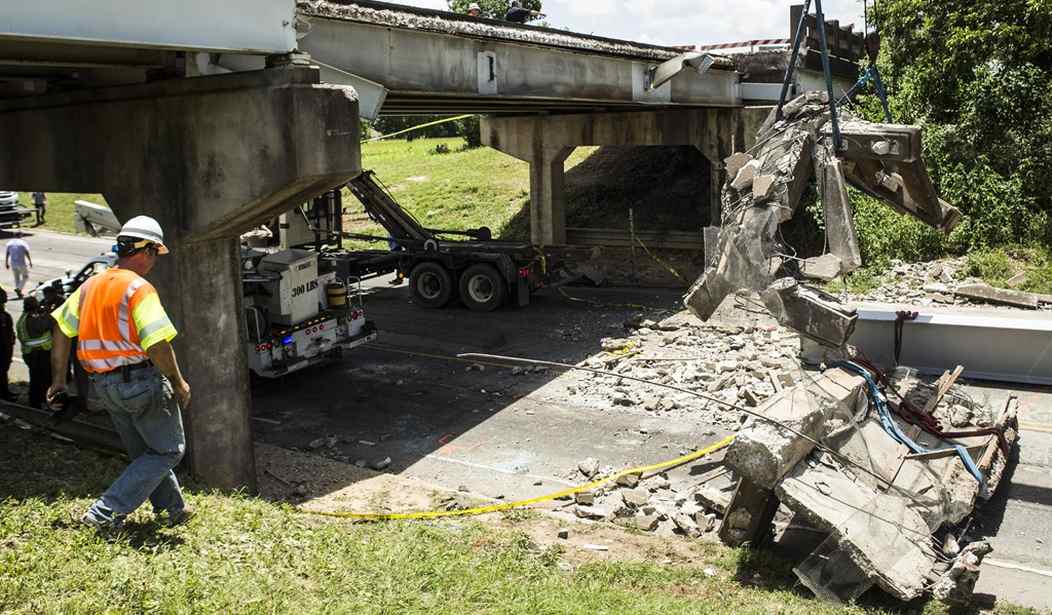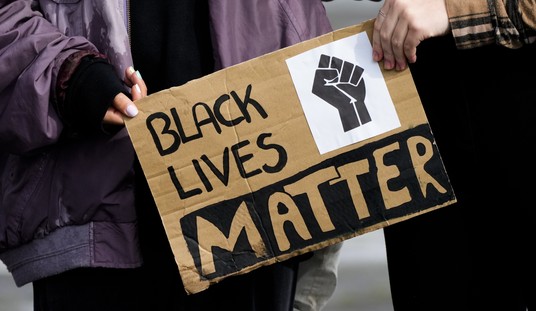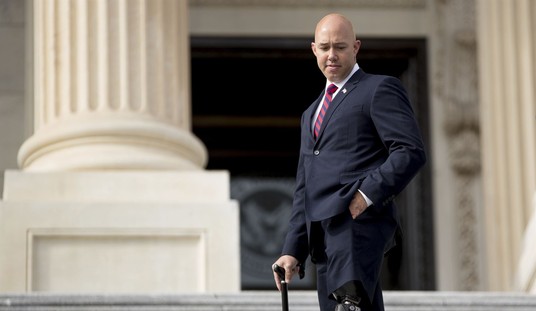Editor's Note: This column was co-authored by Jennifer Panning and Andrew Reder.
It’s hard not to discuss the state of roads and bridges in the United States after we heard of last month’s collapse of a bridge in Pittsburgh, Pennsylvania.
It is sad and ironic that on the same day the bridge collapsed, President Joe Biden traveled to Pittsburgh to tout the implementation of his $1.2 trillion infrastructure bill, which only allocates $110 billion (9.17 percent) for what would be considered traditional infrastructure, U.S. roads, bridges and related projects.
The Wall Street Journal recently estimated 43,000 bridges in the United States are in need of repair at an estimated cost well above the $40 billion currently allocated for bridge repair in President Biden’s infrastructure bill. The funding for roads and bridges is spread out over 10 years and is woefully inadequate. Hundreds of billions of dollars in the president’s transportation bill that are being spent on less-needed green energy initiatives and other programs could easily be reassigned to shore up this nation’s roads and bridges in a more timely fashion.
The three of us happen to live in Michigan, and on a daily and weekly basis, drive across numerous urban and rural bridges. As a result of what happened in Pittsburgh, we are concerned about our safety and that of all Michiganders.
The Pittsburgh bridge collapse triggered us to dust off and read the annual highway report by the Reason Foundation published November 18, 2021. Using the most current federal Transportation Department data, the report ranks all 50 U.S. states as to the safety, cost and upkeep of our nation’s roads, highways and bridges based on a number of metrics (1 = best and 50 = worst). Below we explain how Michigan ranks both nationally and within the five Great Lakes region states for 10 of the metrics.
Recommended
1. Michigan ranks No. 32 nationally in the amounts disbursed per mile for bridge and road maintenance. We are third among the Great Lakes region states, spending nearly $93,000 per mile annually. This is well above the national average of $83,714.
2. Michigan ranks No. 35 nationally in the cost to build new state-owned bridges and highways and upgrade or repair already existing bridges and highways. We are third among the five Great Lakes region states, spending $53,099 per mile annually. This also is well above the national average of $41,850 for this category.
3. The cost of procedural repairs to state-owned roads and bridges (such as repaving, filling in potholes, repairing guard rails, etc.) in Michigan is $13,849 per mile. That is less than the national average of $14,570, but well more than Ohio ($9,672) and Wisconsin ($11,752).
4. Michigan ranks 42nd nationally in terms of rural interstate pavement condition. We are fourth among the five Great Lakes region states, with 3.23 percent of our roads in this category in poor condition for the year. We also are well above the national average of 2 percent of roads in poor condition for this category.
5. Michigan ranks even worse for urban interstate pavement condition. Urban interstates are large, multi-lane highways within urban areas. These conditions are typically much worse than those of rural interstates. Michigan ranks 45th nationally and last among the five Great Lakes region states.
6. Michigan is No. 46 nationally in urbanized area congestion (how many hours an average auto user spends in congested traffic conditions in any given state annually). Most states attempt to accurately evaluate this using a peak hour volume-to-capacity ratio, as outlined in the U.S. Highway Capacity Manual. We are fourth among the Great Lakes region states for peak hours spent by commuters in urban traffic congestion at 42.07 hours, which is nearly double the national average of 23.83 hours for this category.
7. Regarding structurally deficient bridges, Michigan ranks 43rd nationally and last among the five Great Lakes region states with 10.82 percent of its bridges deemed to be structurally deficient. Michigan was considerably above the national average of 7.46 percent. In writing this article, it is important to note Pennsylvania ranked 46th in this category.
8. Michigan’s overall fatality rate ranks 14th nationally and third among the five Great Lakes region states with a fatality rate of .96 percent per 100 million vehicle miles driven annually. This is more than Wisconsin (.85 percent) and Illinois (.94 percent), but less than Indiana (.98 percent) and Ohio (1.01 percent). Michigan was below the national average of 1.11 percent fatalities per 100 million vehicle miles driven.
9. Michigan’s rural fatality rate ranks seventh nationally and best among the five Great Lakes region states, with .66 percent fatalities per hundred million rural vehicle miles driven. Michigan was substantially better than the national average of 1.26 percent for this category.
10. Our urban fatality rate ranks 25th nationally and fifth among the five Great Lakes region states, with a .74 percent fatality rate per 100 million urban vehicle miles driven. This is higher than Wisconsin (.49 percent), Ohio (.58 percent), Indiana (.61 percent) and Illinois (.72 percent). Michigan performed better than the national average of .82 percent for this category.
Overall, Michigan ranked No. 34 when considering all 13 metrics in the 2021 report — down 10 spots from the 2020 report.
Michigan was fourth in the Great Lakes Region, ahead of only Illinois.
When one reflects more carefully on the Reason Foundation report, and the state of roads and bridges in Michigan, three thoughts come to mind. First, we have a governor who ran for office four years ago, with a major campaign slogan stating “fix the damn roads.” That clearly has not happened, and our roads have gotten worse based on the best available data. Our state Legislature also bears responsibility for the current state of our roads and bridges. We need to demand more from our government, as we deserve better. So does our tourist economy that depends on our roads and bridges to help produce annual revenue. In 2020, tourism revenue was at a pandemic low of roughly $18.8 billion while generating estimated local and state tax revenues of $2.6 billion, according to Tourism Economics.
Second, Michigan was the 10th highest taxed state with 45.12 cents in taxes and fees levied on a gallon of gasoline in 2021, according to the Tax Foundation. When investigating if gasoline tax dollars are being used most effectively on Michigan roads and bridges, we answered no. Whereas most U.S. states direct 100 percent of gasoline tax revenue for the care of roads and bridges, Michigan redirects just over 33 percent to other budget items, with the lion’s share going to education and law enforcement.
Third, there are thousands of miles of private roads across the state of Michigan like those inside the corporate campuses of companies such as Dow, DuPont, General Motors, Whirlpool, and elsewhere. We should study how they build and maintain roads and bridges, and to what degree they do a better job, which can hopefully help reduce the cost and help the state produce and maintain less costly and stronger roads and bridges. It is also important to note that many countries around the world have privately-run subways, toll roads, etc. that should be seriously explored here in Michigan and across the United States. This could reduce costs and improve quality while injecting competition into building and maintaining roads and bridges in Michigan, across the Great Lakes region and nationally.
We hope questions generated here will help Michigan avoid a bridge collapse like the one last month in Pittsburgh or in Minneapolis in 2007 where 13 people died and 145 people were injured.
Timothy G. Nash is the director of the McNair Center for the Advancement of Free Enterprise and Entrepreneurship at Northwood University.
Jennifer Panning is president of Artisan Tile, Inc in Michigan.
Andrew Reder is an economics major and McNair Scholar at Northwood University.
























Join the conversation as a VIP Member